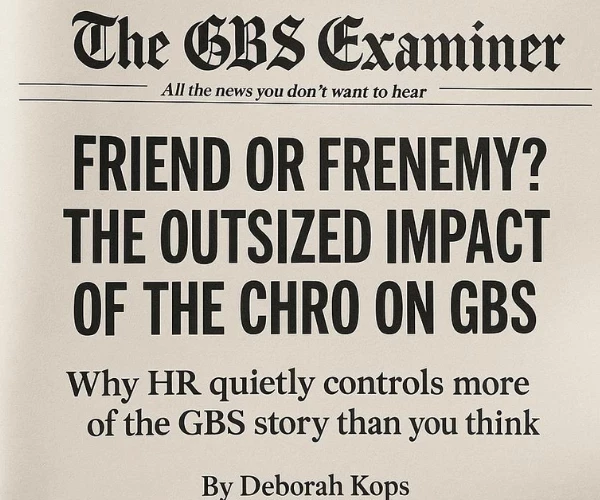Editor's note: Welcome to "Ask the Expert" where each week, a member of the SSON Global Advisory Board answers a common question in the shared services/GBS space. If you have a question you'd like to ask the advisory board, let us know by emailing info@ssonetwork.com.
One of the key challenges for any Global Business Services (GBS) unit - be it Sourcing, P2P, O2C, Finance, HR or IT - is how to transcend from being an efficient “service provider” to the “services” itself. The traditional paradigm of GBS has been efficiency, robust service catalog and associated SLAs, effective location strategy, and growing automation of all stripes. We have been talking about creating value for the functions or the company for a long time. No doubt there has been sustainable success beyond delivering vanilla efficiency, but it’s debatable whether the functions have truly embraced its GBS talent as one of its own.
Here is a possible reason. While GBS has repeatedly messaged “value creation for the company” as a key theme, it did not always define its success in the same terms as the function it serves. For example, a GBS function like Accounting or Balance Sheet Reconciliation rarely explains its impact in the context of 10-Q / 10-K filing to the SEC, an essential regulatory requirement for any public company in the US. We generally do not design the performance goal or KPI of an Accounting GBS unit against accuracy and completeness of the disclosures and footnotes of the 10-Q. GBS’ success is broadly defined by the success of the process it performs and measured those relentlessly. Ironically, in doing so, the principal stakeholder sees the remit as well as talent capabilities of the GBS to be limited.
That doesn’t bode well to make the GBS an integral part of the function’s ecosystem or create a career pathing for its talent that can go in and out of the function it serves. The same example can be extended to another common GBS function like Order to Cash (O2C). We rigorously manage down O2C cycle time and error rate, and improve the recovery. However, it’s probably open to debate how many GBS leaders and more so, its employees can effortlessly correlate those metrics to the improvement in Statement of Cash Flow that the firm submits as part of 10-Q. Or if I take that logic further, to the effectiveness of the firm’s treasury/cash management strategies and, therefore, to its Tangible Equity ratios.
The path forward for the GBS is not to overuse the “world-class service provider” label and make “Success Together” its defining strategy. GBS’ strength historically has been an absolute command over the process taxonomy and robust service catalog that can be measured to the n-th degree. That’s a competitive advantage for sure, and few functions in any company have been able to master that difficult craft. But overusing that strength is also drawing a subtle line between the GBS and the function it supports. The goal of the GBS leader is to create a seamless continuum of work that straddles GBS and function employees without anyone able to distinguish which part of the organization is delivering it and if there is a skill set difference. Adopting that strategy does not diminish the GBS nor chips away its competitive advantage. It levels GBS equally with the stakeholder function. That’s a win-win for the company and for the GBS talent.




































